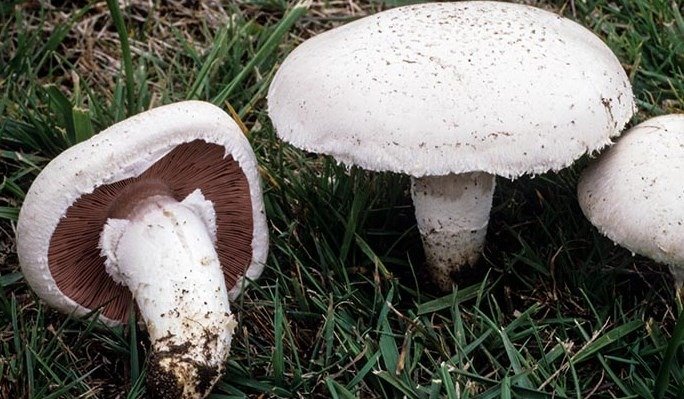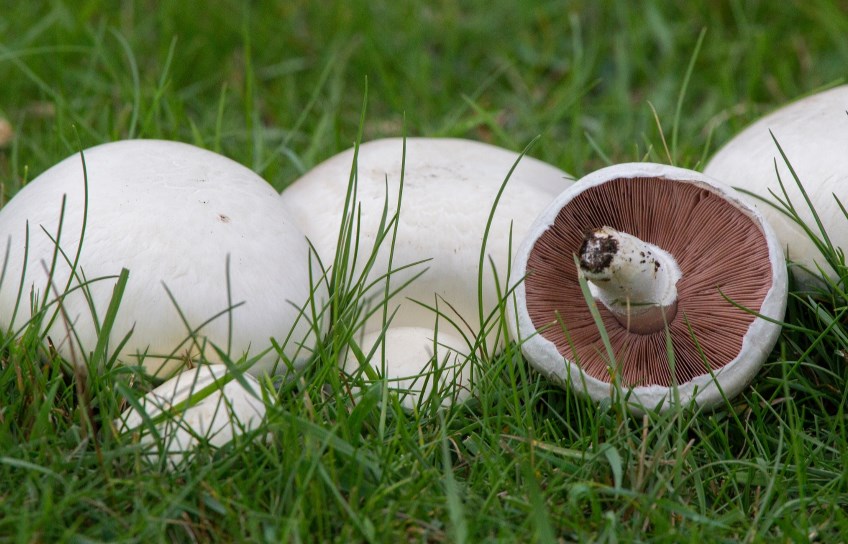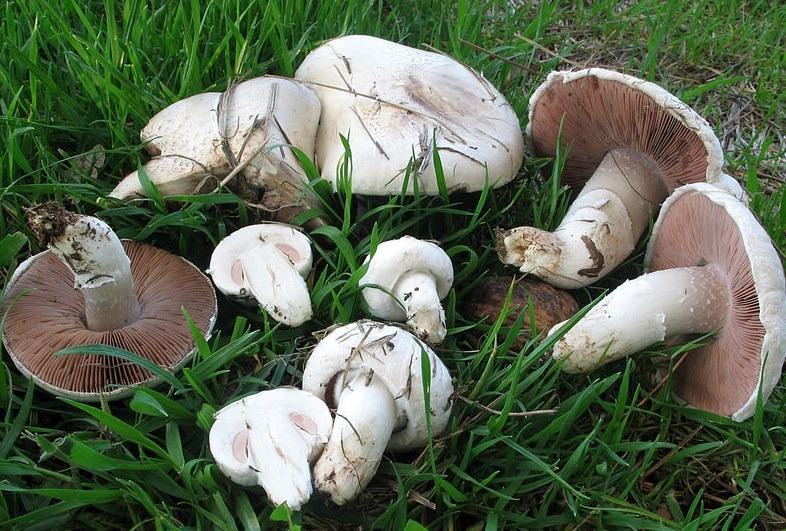Agaricus campestris is an edible fungus of excellent quality commonly known as the field mushroom and almost always grows on grassy meadows and pastures.

Other Names of Agaricus Campestris
Agaricus campestris also known by the name of psalliota campestris as well as agaricus campestris. Other less common name of the field mushroom is “prataiolo” (in Italy)
The correct name would be Agaricus campester because agaricus in Latin is male and campestris in Latin is female. So actually “agaricus campestris” is a grammatical error. One of its growing varieties, called Agaricus bisporus, is the well-known Champignon mushroom.
Description
Less experienced collectors need to be very careful when looking for or encountering this mushroom on a lawn. In fact, the agaricus campestris can be confused with some white Amanita mushrooms such as the Amanita verna and the Amanita virosa which are both deadly. Therefore, it is necessary to pay attention, above all, to the colour of the gills. It should also be remembered that there are some varieties of toxic field mushrooms.
Cap of Field Mushroom
The cap of the agaricus campestris measures from 4 to 12 cm in diameter. At the beginning of the development of the mushroom, it is round and then becomes convex and stretches until it becomes almost flat.
The surface of the cap is dry and fibrous. The colour is white or yellowish. However, it can also vary from pinkish white to clay or beige. On the surface there are tiny brownish scales that contrast with the light background of the cap.
Gills
The gills of the field mushrooms are thin and very fine. At the beginning of their development they are white and then change to a pinkish colour. Towards the maturation of the mushroom become Grey Rose and Violet. Finally, they reach the purplish intense brown colour.
Stipe
The stipe measures from two 9 cm high and is quite stocky. Its cylindrical shape is slightly enlarged at the base. The colour of the stipe is white with red hues. If touched, the flesh of the stem turns slightly yellow. It has a simple ring of whitish colour which is situated at half the height of the stipe.
Flesh
The flesh of the mushroom agaricus campestris is soft, white and very firm. Its smell is pleasant and the taste pleasantly sweet. The flesh, if cut from white, becomes pink.

Habitat of Agaricus Campestris
The mushroom agaricus campestris is a mushroom that develops in all places where there are favourable conditions for its reproduction. It is a saprophyte fungus that simply requires the presence of decomposing organic material to develop.
It grows mainly in open, sunny and well-ventilated areas. Especially found in the pastures, as it prefers the pure manure of grazing animals.
When you find a field mushroom you will probably find it in large quantities with many specimens nearby. Sometimes the specimens are also arranged in circles, larger and larger. These are the so-called “witch circles”. This is because the fungus mycelium in the soil develops concentrically from the initial point and proceeds outside with a growth rate of about 30 cm per year.
Agaricus campestris doesn’t even need a lot of rain to grow. It only needs a state of humidity in the air. I have soil such as that caused by dew or fog. This mushroom is also sometimes found in parks in city gardens or on roadsides. However, it should always be searched out of the woods.
Season
Agaricus campestris can be found from spring to autumn. It may appear in late spring and then reappear towards the end of summer, especially if the climate is humid and warm. Or even if a dry heat period has occurred after a wet period.
Varieties of Agaricus campestris
As mentioned in a previous paragraph, agaricus campestris can be confused both with other field mushrooms that are simply of its varieties, and with some white amanitas that are deadly mushrooms.
Therefore, we must pay attention to the differences between the different varieties and species, especially with regard to the ring, the gills and also the habitat where the fungus is found.
The confusion with the poisonous species of Amanita occurs mainly with the species of Amanita Verna and with the Amanita virosa.
Some variations of Agaricus campestris are instead A. equestris, A. floccipes, A. fuscopilosella, A. squamulosa, A. isabellina. On the other hand, a larger lawnmower is the Agaricus arvensis, which can even reach 20 cm in diameter of the cap.

Some field mushrooms recipes
Agaricus campestris mushrooms can be eaten raw, e.g. in a salad, or stewed, e.g. in soups. they can also be used as a side dish for many different dishes, especially the youngest, smallest and most robust specimens.
The mushrooms can also be served as an appetizer after being put in oil.
Agaricus campestris and Potatoes
One of the simplest recipes for preparing agaricus campestris is as follows: put the mushrooms in a pot after they are well cleaned. For this reason it is better to use young or small mushrooms. Then add some parsley, a little garlic, oil or butter. Add a little salt and then cook over a low heat until the water that has come out dries. Then they are poured into the dish and served hot accompanied by crispy French fries.
Agaricus campestris with polenta
Another recipe is that of polenta with prawns and quails: brown a slice of ham, salt, a little bay leaf and clean quails divided into two with a simple butter. Halfway through the cooking process, add the prataioli cooked with butter and salt. At the end, add a little meat sauce with tomato sauce and serve hot with polenta.
Agaricus campestris with lard
Another interesting recipe is the one with the lard and field mushrooms on toasted bread: fry a few slices of smoked lard and add the mushrooms, divided into two, with a little onion and parsley, pepper and a tablespoon of flour. Let it all brown, wetting it with white wine. Once dry, remove the mushrooms and serve on toasted fried bread lightly dipped with lemon.
IDENTITY CARD
CAP COLOR: White – Brown
STIPE HEIGHT: 3-8 cm
STIPE COLOR: white
GILLS: Rosee
FLESH: White
SMELL: Strong
TASTE: Decided
SPORE: Brown Swiss
HABITAT: Farmland
Did you find what you were looking for? See also here:
- Ganoderma Lucidum
- Armillaria Mellea
- Amanita Caesarea
- Agaricus Bisporus
- Amanita Phalloides
- Coriolus Versicolor
- Flammulin Velutipes
- Marasmius Oreades
- Pleurotus Ostreatus
- Agaricus Campestris
- Macrolepiota procera